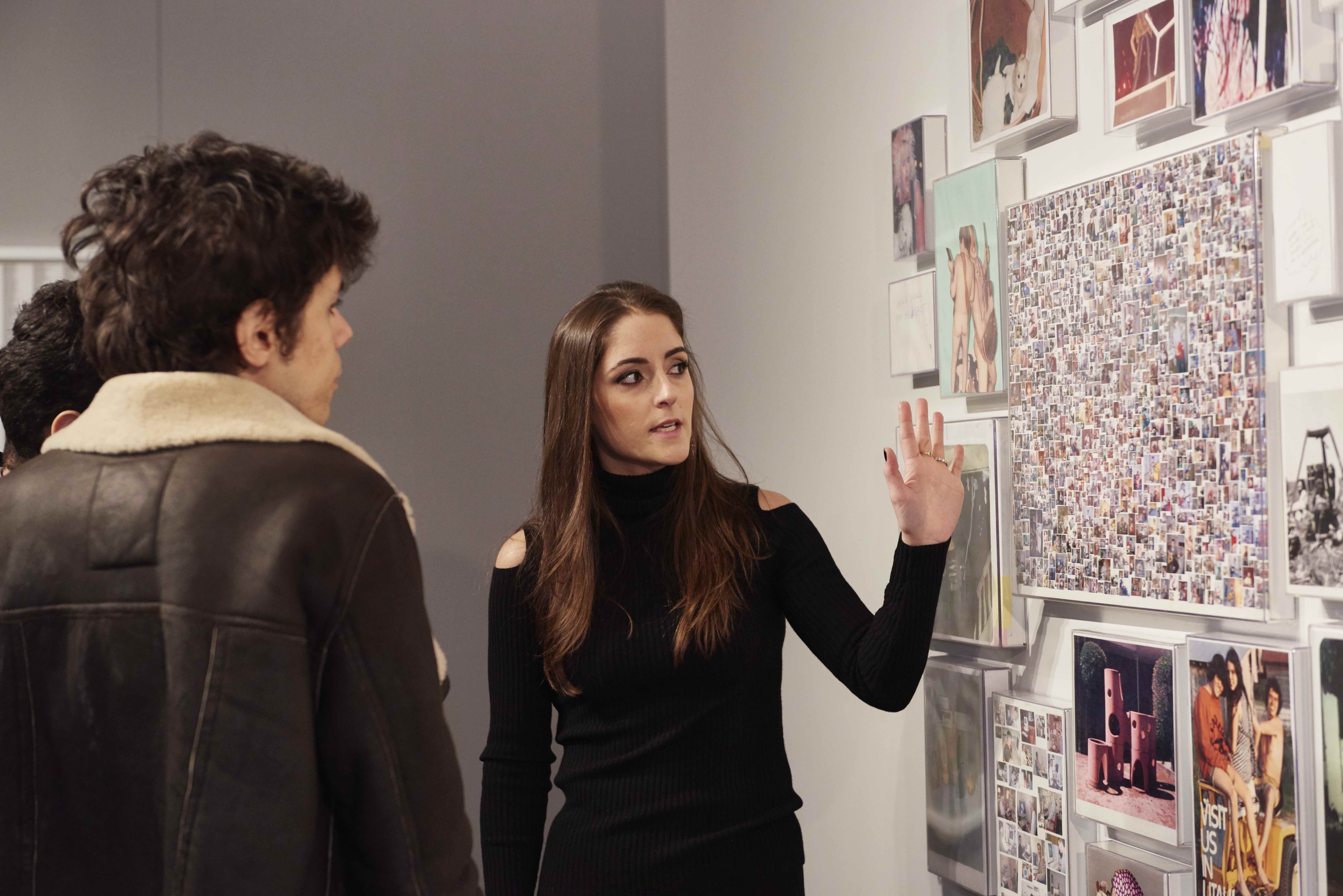Foundation News
Allison Brant: Greenwich Time
September 10th, 2018
Cultivating appreciation: Brant Foundation savors past, eyes future in quest to share contemporary art trove
By Christina Hennessy
Allison Brant peers into the passageway as she encourages a visitor to do the same. A mini labyrinth of corridors, it is created by large recycled thermoplastic tubes, a nod to many such structures around the world that shepherd a most precious resource.
“He is exploring how he wants people to think about water,” she says of the work of Oscar Tuazon, one of three American artists whose work is on display at the Brant Foundation Art Study Center through October. “He wants you to move through it and experience it.”
His works, such as “Une colonne d’eau — Life Prototype,” which dominates one of the center’s galleries, are as much about aesthetics as they are about activism, in the sense of raising awareness about the world’s resources and sustainability. Brant realizes there is limited time in the tour, but encourages her guest to do independent research about the work of this Los Angeles artist.
Her knowledge of Tuazon is as deep as her understanding of the other two artists in the show, fellow American artists Joe Bradley and Michael Williams, who primarily draw and paint. It delights her to share the inspirations and stories behind their works, which she does for every tour.
“I love to study the artists,” she says. “I love to study their influences and learn everything about them. For me, the knowledge just makes me love the work even more and deepens my experience.”
Brant, the center’s director, is the embodiment of what her father Peter Brant, a publishing and newsprint executive, set out to do when the opened the center in 2009. By creating the space in north Greenwich — in a former stone barn that once served as cold storage for fruit from area orchards — pieces of his art have become more accessible to those new to contemporary art, as well as seasoned scholars, who, perhaps, gain a better understanding of those who are making it and their import in the timeline of art history.
“Before the center opened, the foundation existed mostly with loans, and we still do that,” she says. “This year, we are going to loan over 100 works, all over the world. But, Peter very much wanted to have a space where people not only could come and see the work, but also a space where he could give artists plenty of freedom.”
As it nears its 10th anniversary, Allison Brant is looking to the future with an eye to the past. Unable to pick a favorite show, she does love how artists are encouraged to transform the space, or use it to express a particular journey. In the latest show, there is a through line starting with the inception of creativity, in the center’s library and study room. There are maquettes of Tuazon’s sculptures and early drawings from Bradley and sketches from Williams that inform the large-scale paintings one finds further along in the space.
Over the years, artists’ visions have transformed the center. Urs Fischer excavated a large portion of the gallery floor in his 2010 “Oscar the Grouch” show. Josh Smith used it as a temporary studio to create works in 2011. Karen Kilimnik arranged vignettes, including a sumptuous military tent fit for a general, for her 2012 exhibition. Jonathan Horowitz encouraged visitors to leave items or take them in his installation, “Free Store” during his 2016 show “Occupy Greenwich.”
The shows provide the fuel to move the center and Brant forward, who has a deep affinity for the “study” part of the center’s name.
For instance, the center has tapped the themes of the present exhibition to guide events that foster artistic expression among all ages. In June, artists were encouraged to use the landscape (the center looks out onto the Greenwich Polo Club grounds) as inspiration for abstract work, as Bradley did early on in his career. Tuazon’s sculpture was the starting point for a children’s workshop on handmade bird feeders.
Of particular satisfaction is watching as visitors make personal connections to the work. Is that the sun, a boat in one of Bradley’s colorful, large works?
“I think for (Bradley), he wants this to be whatever you want it to be,” she says, pausing before the painting. “It is very much about your reaction and what you see in the work.”
Before there are any personal revelations, of course, one needs to know the art is there in the first place. Part of the center’s mission is to ensure local audiences know about this cosmopolitan gem tucked into a pastoral setting. The center is open to the public Monday to Friday, as long as they sign up in advance for an appointment.
Its scholarly holdings should soon be even easier to share, as well, given it has begun a cataloguing project of its more than 12,000 books, catalogs, periodicals and other material — something that would have been a boon to Brant as a college student while studying art. “I used to have to come home all the time to do research,” she says, laughing.
Brant also is hopeful that, come the fall, the center will have Saturday hours for visitors coming to see the work of the next show on Francesco Clemente.
“We have thousands of visitors a year, and we do many programs, but it still feels like a drop in the bucket compared to how large this community is,” she says. “We are constantly thinking of ways to improve and continue to grow.”
